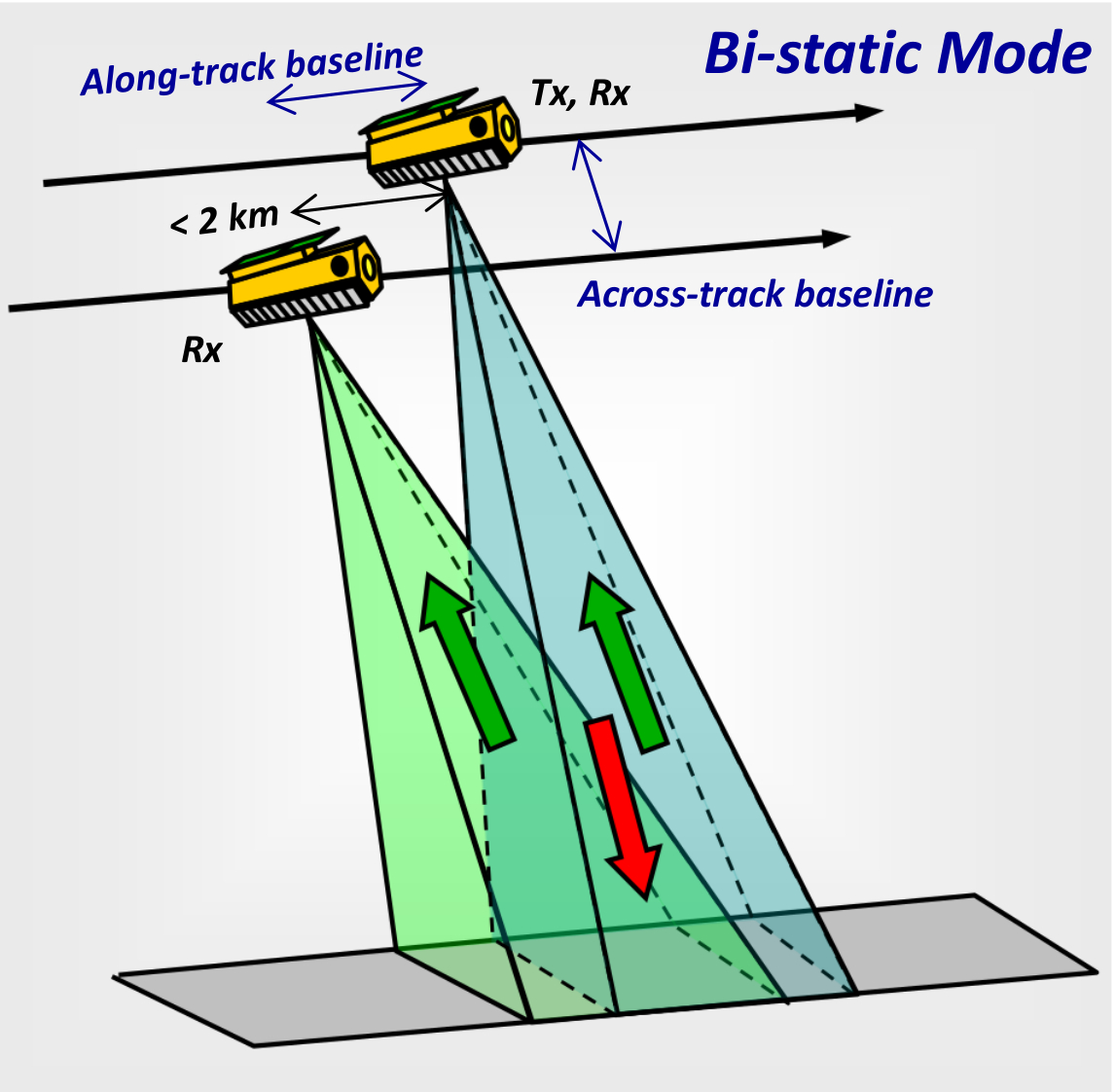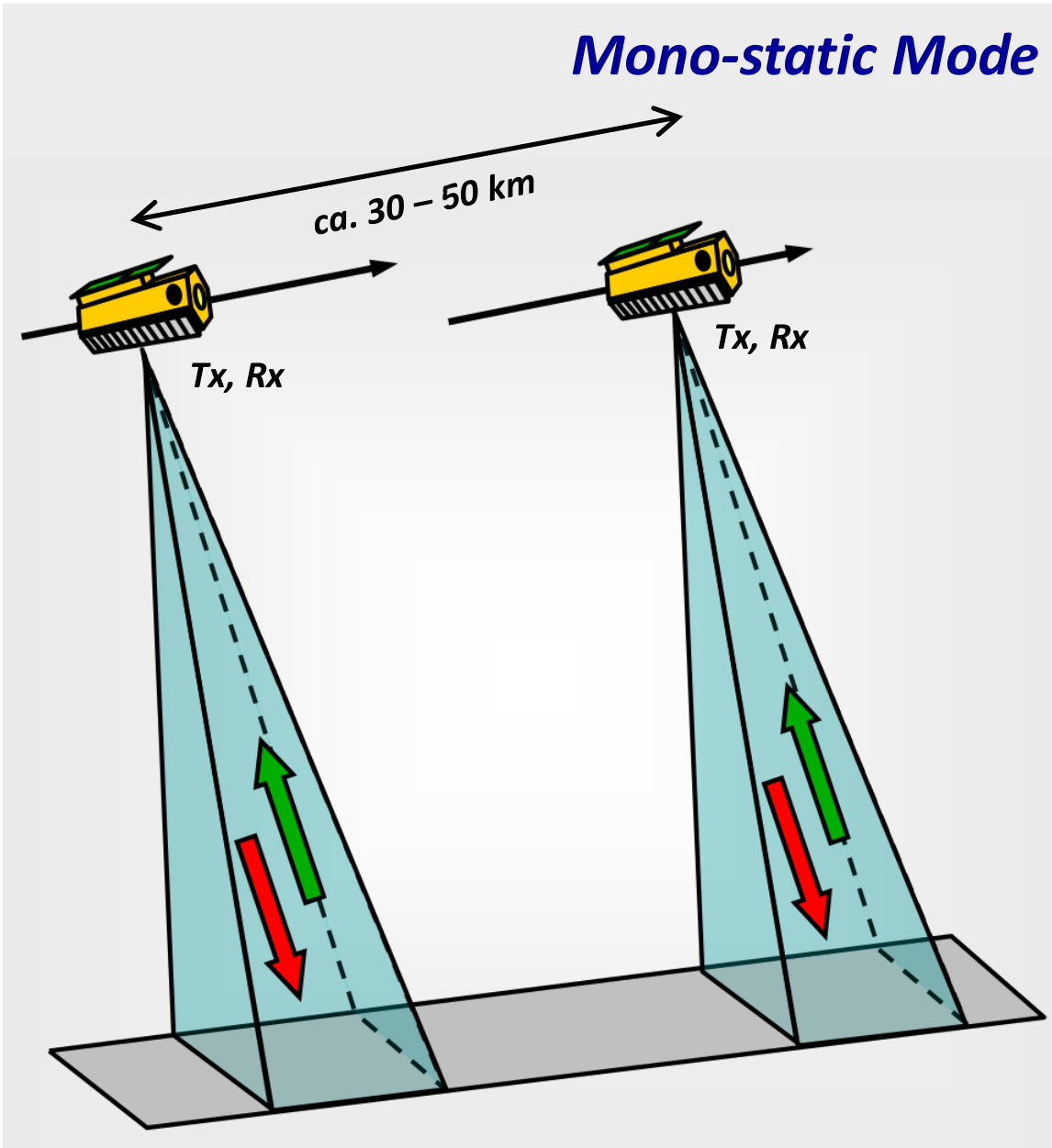
|
Science Service System |

|
|
You are here : Home
: Technical Concept
|

Technical Concept
|
With TanDEM-X a novel interferometric instrument is introduced, consisting of two companion SAR satellites flying in close formation with the main goal to provide operational, bi-static single pass interferometry products of new quality with tuneable interferometric baselines. To comply with the mission and system requirements the technical concept is based on TerraSAR-X (TSX) and the TDX satellite as a quasi-rebuild of TSX, with mission specific functions. The advantage of two "equal" satellites for TanDEM-X, is that it
For interferometric imaging the following instrument modes are proposed: |
|
|
Bi-static Mode
Operational DEM generation will be performed using bi-static mode (see figure top right). Its principle is characterized by the simultaneous measurement of the same scene and identical Doppler spectrum with 2 receivers, avoiding temporal decorrelation. To provide sufficient overlap of the Doppler spectrum, along-track baselines < 2 km are required while the effective across-track baselines for high resolution DEMís have to be in the order of 1 km. PRF synchronization and relative phase referencing between the satellites are mandatory.
Pursuit Mono-static Mode
A secondary DEM generation mode is the pursuit mono-static mode, where two satellites are operated independently, avoiding the need for synchronization (see figure bottom right). The along-track distance is 30-50 km. The temporal decorrelation is still small for most terrain types with exception of ocean surface and vegetation in the case of moderate to high wind speeds. The interferometric height sensitivity is doubled with respect to bi-static operation, meaning that the baseline determination has to be more accurate.
Along-track Interferometry, ATI Mode
Along-track interferometry will enable accurate velocity measurements e.g. for monitoring ocean currents, sea ice drift and traffic. The required along-track baselines range from several hundred meters to several kilometers. The ATI mode benefits greatly from the 2x2 phase centers to resolve ambiguities in the velocity measurement, thereby providing a unique MTI system for accurate velocity measurements on a large scale.
Experimental Modes
Numerous experimental modes, mainly exploiting the bi-static measurement configuration and the polarimetric capabilities, are considered. Some of them could evolve during the mission from an experimental to an operational mode. A very promising candidate is polarimetric interferometry. Another is super resolution, an elegant way toimprove spatial resolution by a factor 2.
| © DLR, 2006-2021 |
|


